1926 Francis
Edgeworth, mathematician.
1916 Vilhelm Hammershøi, Danish painter born on 15 May
1864. — a bit more
with link to images.
1898 U.K.’s First Auto Fatality Henry Lindfield
of Brighton, England, died one day after being involved in an automobile
accident, becoming the first driving fatality in Great Britain.
1883 Wilhelm Richard Wagner, 69, German composer (Die Walküre),
in Venice.
1874 Taurinus,
mathematician.
1837 Mariano José de Larra y Sánchez de Castro,
escritor español.
1821 Jean-Jacques Lagrenée, French
painter born on 18 September 1739. — more
with links to images.
^
1820 Duc de Berry
Le soir, devant l'ancien Opéra de Paris, rue de Richelieu, un spectateur
s'écroule sur les marches. Le duc de Berry vient d'être frappé d'un
coup de couteau au coeur par un ouvrier cordonnier, Louis Louvel.
La victime est le neveu du vieux roi Louis XVIII et le fils du comte
d'Artois, le futur Charles X. C'est la seule personne susceptible
de donner un héritier à la famille royale.
L'assassin est un républicain fanatique qui a voulu éteindre par son
geste la dynastie des Bourbons. Son crime suscite dans le camp royaliste
une émotion immense que n'apaisera pas son exécution. Les ultra-royalistes,
qui dénoncent les idées libérales et la Charte constitutionnelle,
donnent libre cours à leur colère et s'en prennent au président du
Conseil, Decazes, qu'ils accusent de laxisme. Le vicomte de Chateaubriand,
écrivain célèbre, n'hésite pas à écrire: "Le pied lui a glissé dans
le sang".
Dès le 20 Feb, le
duc Elie Decazes doit remettre sa démission au roi, au grand regret
de celui-ci. Il est remplacé par le comte Jean-Baptiste de Villèle,
ancien maire de Toulouse et représentant des ultras. C'en est fini
des tentatives de conciliation entre la monarchie constitutionnelle
et la gauche libérale. Très bientôt, la censure est rétablie et la
loi électorale réformée au profit de la bourgeoisie conservatrice.
L'opposition libérale ne trouve plus à s'exprimer que dans les conspirations
secrètes.
Pourtant, l'espoir
renaît chez les Bourbons. On apprend en effet que l'épouse duc de
Berry est enceinte! Marie-Caroline de Savoie donne le jour à un fils
posthume en juin 1819. Les poètes Alphonse de Lamartine et Victor
Hugo joignent leur jeune talent à toutes les réjouissances qui accompagnent
la naissance de cet "enfant du miracle". Une souscription publique
est organisée pour lui offrir le domaine de Chambord. D'où le titre
de comte de Chambord qui sera désormais le sien.
Après la révolution des Trois Glorieuses (27 Jul à 29 Jul
1830), qui chasse Charles X et porte sur le trône son cousin Louis-Philippe
d'Orléans, l'enfant, âgé de dix ans, doit suivre son grand-père dans
l'exil. Elevé dans la haine de la Révolution et l'ignorance de la
France, il ne saura pas saisir l'occasion qui lui sera offerte de
monter sur le trône en 1871, après la chute de Napoléon III. |
1788 Jean-Germain Drouais, French painter born on 25 November
1763. — MORE
ON DROUAIS AT ART “4” FEBRUARY
with links to images.
1787 Ruggero
Boscovich, 75, mathematician.
1692 MacDonald
clan, murdered on orders of King William III.
1660
Charles X Gustaaf, 37, king of Sweden (1654-60)
1592
Jacopo (or Giacomo) da Ponte Bassano, Italian painter born in 1515.
— MORE
ON BASSANO AT ART “4” FEBRUARY
with links to images.
^
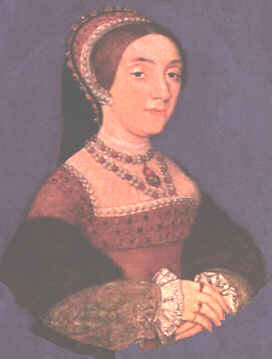 1542
Catherine Howard, 5th wife of England's King Henry VIII, beheaded. 1542
Catherine Howard, 5th wife of England's King Henry VIII, beheaded.
Her downfall came when Henri
VIII learned of her premarital affairs. Catherine [< portrait]
was one of 10 children of Lord Edmund Howard (died 1539), a poverty-stricken
younger son of Thomas Howard, 2nd duke of Norfolk. Henry VIII first
became attracted to the young girl in 1540, when he was seeking to
end his politically motivated marriage to Anne of Cleves, to whom
Catherine was a maid of honor. She was a cousin of Anne Boleyn.
He had his marriage to Anne annulled
on 09 July, and on 28 July Henry and Catherine were privately married.
He publicly acknowledged her as queen on 08 August. For the next 14
months Henry appeared to be much enamored of his bride. But in November
1541, he learned that before their marriage Catherine had had affairs:
Henry Mannock, a music teacher; Francis Dereham, who had called her
his wife; and her cousin, Thomas Culpepper, to whom she had been engaged.
After her marriage to Henry, Catherine had made Dereham her secretary,
and it is probable — though still unproved — that she had
committed adultery with Culpepper. The king, initially incredulous,
became incensed with these revelations. On 11 February 1542, Parliament
passed a bill of attainder declaring it treason for an unchaste woman
to marry the king. Two days later Catherine, 21, is beheaded in the
Tower of London.
Henry
the VIII's 6 wives were:
1. Catherine of Aragon (married at age 23 in 1509, gave birth on 18
February 1816 to the future queen Mary I, Henry left her in July 1531,
and got the Anglican Church started for it to annul his marriage,
which it did on 23 May 1533. She died on 07 January 1536 of natural
causes),
2. Anne Boleyn (married at age 26 on 25 January 1533, gave birth on
07 September 1533 to the future queen Elizabeth I, was beheaded on
19 May 1536 for adultery, almost certainly falsely alleged, while
Henry was guilty of same).
3. Jane Seymour (married at age 27 on 30 May 1536, gave birth on 12
October 1537 to Henry's successor, Edward VI, and died of natural
causes on 24 October 1537).
4. Anne of Cleves, (married at age 24 on 06 January 1940, marriage
annulled by Anglican Church on 09 July 1540, she died on 16 July 1557
of natural causes)
5. Catherine Howard, (married on 09 July 1540, beheaded on 13 February
1542 for treason, namely her premarital affairs)
6. Catherine Parr. (married at age 31 on 12 July 1543, Henry died
28 January 1547 before thinking of beheading or divorcing her, she
remarried and died on 07 September 1548, shortly after giving birth)
Another victim of Henry VIII's marital history was English Catholic
theologian Thomas
More who, on 06 July 1535, was beheaded for refusing to recognize
Henry VIII as supreme head of the Church of England, which had broken
with the Roman Catholic Church so that Henry VIII could divorce wife
number 1 and get wife number 2 (which he ordered beheaded less than
a year after Thomas More, so as to make room for wife number 3).
Henry VIII would have been beheaded if Parliament had been even-handed
and declared it treason for an unchaste king to be married. Among
his numerous affairs were those with Joan Dobson (giving birth
to Etheireda Tudor) , Mary Berkeley (producing in 1525 Thomas Stukely
and in 1527 Sir John Perrot 1527), Elizabeth Blount (giving birth
in 1519 to Henry Fitzroy, Duke of Richmond), and with Elizabeth Stafford.
|
^
1500 Benvenuto Cellini, in Florence,
sculptor, goldsmith, and writer born on 01 November 1500.
—
Florentine sculptor and engraver, who became one of the foremost goldsmiths
of the Italian Renaissance, executing exquisitely crafted coins, jewelry,
vases, and ornaments. Born in Florence, Cellini was apprenticed to
a goldsmith at the age of 15. When he was 16, his fiery temper and
continual dueling and brawling caused him to be exiled to Siena. Later,
in Rome, he was Michelangelo's
pupil for a short while. Among Cellini's most famous patrons were
Pope Clement VII, Pope Paul III, Francis I of France, and the Florentine
noble Cosimo
I de' Medici. Francis I invited him to Paris in 1540, where he
modeled the bronze reliefs of the Nymph
of Fontainebleau. He also executed an elaborate gold
saltcellar for Francis (1543). Compelled to leave in 1545 because
of his quarrels with the king's mistress and his eccentricities, Cellini
returned to Florence. There, under the patronage of Cosimo de' Medici,
he executed many fine works in metal, among them a bronze
portrait bust of Cosimo and the colossal bronze statue Perseus
and Medusa (1554). He died in Florence. Cellini is also noted
for his autobiography, written between 1558 and 1562. An embellished
account of Cellini's escapades, adventures, and intrigues, this text
provides a valuable portrait of daily, political, social, and ecclesiastical
life in the 16th century.
— Nato a Firenze, Benvenuto
Cellini iniziò l'usuale apprendistato presso diversi maestri orafi
quando aveva appena tredici anni, rivelando da subito originalità,
inventiva ed una personalità particolarmente rissosa. Furono proprio
le intemperanze del suo carattere che nel 1516 lo portarono al confino
di sei mesi a Siena e nel 1523, sempre a causa di una rissa, al definitivo
(e forzato) abbandono di Firenze per Roma. A Roma riuscì a frequentare
le botteghe dei più noti maestri orafi della città e, una volta in
proprio, ad accattivarsi le simpatie di papa Clemente VII, per il
quale portò a termine numerosi lavori. Nel 1527, l'anno del sacco
di Roma, si vantò di aver preso parte in maniera attiva alla difesa
della città riuscendo ad uccidere il conestabile Carlo di Borbone
e a ferire il principe d'Orange con un solo colpo di archibugio. Ma
il favore di cui godeva, specialmente presso la corte papale, s'indebolì
sotto i colpi del suo mai sopito carattere iroso e dell'ascesa al
trono pontificio di Paolo III il quale, in seguito alle calunnie degli
avversari del Cellini ed all'accusa di essere l'autore di due omicidi
che pendeva sul suo capo, nel 1538 lo fece arrestare e rinchiudere
a Castel Sant'Angelo. Riuscito avventurosamente ad evadere, venne
ripreso nel 1539 e liberato definitivamente l'anno dopo per intercessione
di Ippolito II d'Este. Il Cellini decise così di stabilirsi in Francia,
presso la corte di Francesco I, per il quale portò a termine diverse
opere, tra le quali molte furono di scultura. Nel 1545 fu di nuovo
a Firenze, dove il duca Cosimo I de' Medici lo incaricò di scolpire
il Perseo, completato nel 1549. Anche nella sua città natale,
però, il Cellini continuò ad essere perseguitato dalle malelingue
e, non ulteriormente accettato alla corte del duca, si ritrovò a vivere
in miseria gli ultimi suoi anni, durante i quali scrisse i Trattati
della oreficeria e della scultura (1565-'67) e dettò la Vita
(1558-'66), nella quale descriveva, in modo per la verità non totalmente
aderente ai fatti ma conforme a molte altri scritti biografici dell'epoca,
gli avvenimenti della sua esistenza fino al 1562.
Pubblicata
per la prima volta a Napoli da Antonio Cocchi nel 1728, l’autobiografia
di Benvenuto Cellini o Vita di Benvenuto di Maestro Giovanni Cellini
fiorentino, scritta, per lui medesimo, in Firenze fu redatta
inizialmente dallo stesso Cellini in un periodo di forzata inattività
dovuta al poco favore di cui godeva presso il suo ultimo committente,
il duca Cosimo dé Medici, ed in seguito venne dettata dall’autore
ad un figlio tredicenne di Michele di Goro. La Vita, divisa in 2 libri
rispettivamente di 128 e 113 brevi capitoli (il primo libro giunge
fino al 1539, il secondo va dal 1540 al 1562), è tutt’altro che un’obiettiva
autobiografia: al contrario, in essa il Cellini volle soprattutto
celebrare quell’esaltazione dell’individuo e delle sue virtù che fu
tipica della società rinascimentale e della maggior parte della letteratura
biografica dell’epoca.
— Il fut le plus grand orfèvre
de la Renaisance. Il raconte sa vie dans ses passionnantes Mémoires.
Ce contemporain de Léonard de Vinci et de Michel-Ange fut aussi un
très grand sculpteur.
— . CELLINI ONLINE: Vita
(zipped) — (English translation): Autobiography
of Benvenuto Cellini
— ART
LINKS |
1332 Andronicus II Paleologus Byzantine emperor (1282-1328)/monk
1237 Jordanus of Saxon 2nd general of Dominicans, drowns
1130 Honorius
II [Lamberto de Fagman], Pope (1124-30)
0616 San Lucinio.
|
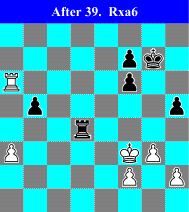

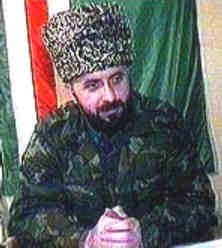
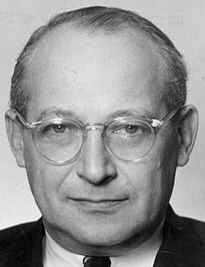 2003
2003


 2000
Charles M. Schulz
2000
Charles M. Schulz 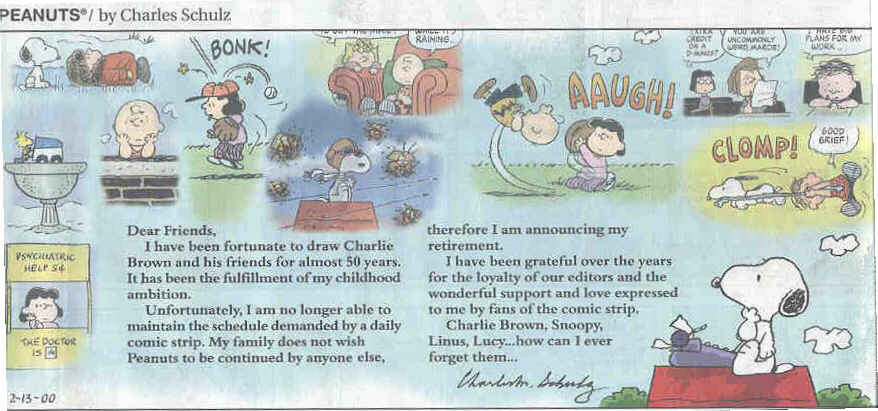
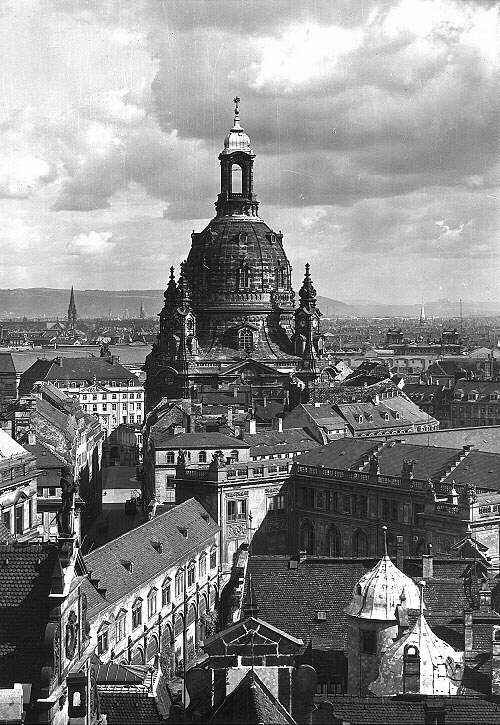 1945
Some 35'000 burned or asphyxiated
as Allied planes fire bomb Dresden Germany; in the night of the 13th to
the 14th. [before and after photos >].
1945
Some 35'000 burned or asphyxiated
as Allied planes fire bomb Dresden Germany; in the night of the 13th to
the 14th. [before and after photos >]. 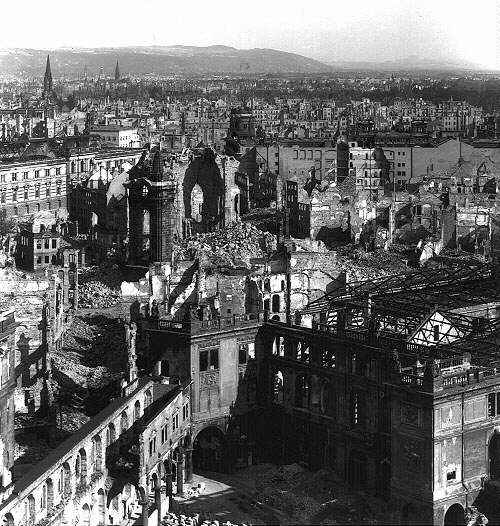 In February 1945, refugees fleeing the Russian advance in the east took
refuge there. As Hitler had thrown much of his surviving forces into a defense
of Berlin in the north, city defenses were minimal, and the Russians would
have had little trouble capturing Dresden. It seemed an unlikely target
for a major Allied air attack.
In February 1945, refugees fleeing the Russian advance in the east took
refuge there. As Hitler had thrown much of his surviving forces into a defense
of Berlin in the north, city defenses were minimal, and the Russians would
have had little trouble capturing Dresden. It seemed an unlikely target
for a major Allied air attack.  1542
Catherine Howard, 5th wife of England's King Henry VIII, beheaded.
1542
Catherine Howard, 5th wife of England's King Henry VIII, beheaded.

